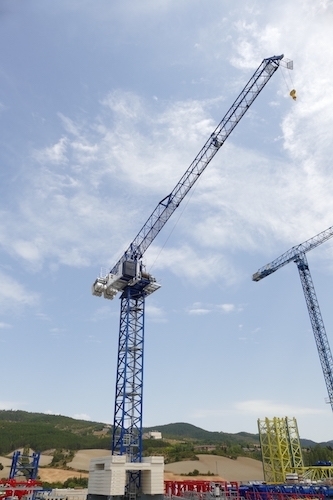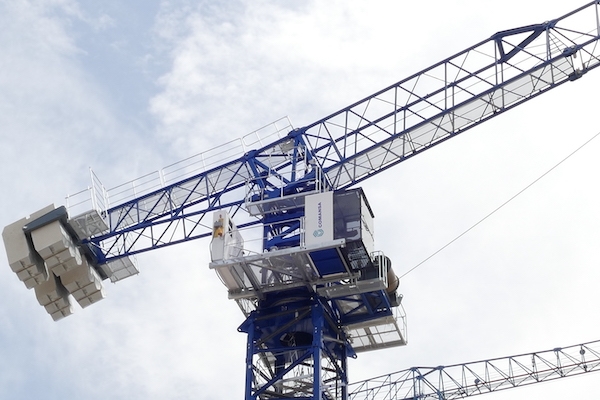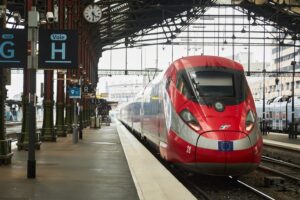Spanish tower crane manufacturer Comansa will present at the Bauma 2022 its latest addition to the luffing jib cranes range, the new LCH300. It is its first hydraulic model with a maximum load capacity of 16 tonnes and reach of 60 metres. The LCH300/16 t is available in various versions: embedded, supported on bases of 6 or 8 metres, or movable. The crane can be assembled with 2.5 x 2.5m tower sections. Its modular jib has a reach of 25 to 60 metres, with configurations every 5 metres. It has a minimum working radius of 4 metres and a minimum radius of 9 metres when out of service.

It has manual transmission combinations of 1T (direct pulling) and 2T. The maximum load capacity is 8t with the 1T configuration and 16t with the 2T configuration. The maximum load at the jib end is 3,400 and 3,150kg, respectively. The luffing moves the jib and counter jib jointly by a hydraulic cylinder at the cathead and jib hinge assembly. The hydraulic pump unit is located on a movable platform in one piece.
From the cabin there is direct visibility of the lifting mechanism of between 50kW (standard) and 65kW (optional). Thanks to the Effi-Plus technology, it is possible to increase the speed of the lifting mechanism without affecting consumption, which allows loading cycles to be considerably reduced, thereby improving the productivity of the crane.
The design of this new rotating part – jib, cathead and counter jib – as well as the mechanism, cabin and hydraulic unit platforms, optimises the transport of this model, which may be supplied by 8 trucks or containers.
This new luffing jib crane from Comansa incorporates the CUBE Cab (L or XL) with Split type air conditioning. The cabin platform, like the lifting and hydraulic unit platforms, can be transported in a single piece.
Comansa luffing jib tower cranes offer optimal performance where horizontal jib cranes cannot move loads freely due to space limitations. Now, with the incorporation of the LCH300 hydraulic model, the luffing mechanism is optimised to offer greater performance and an efficient assembly, as well as reduction of the radius when out of service.






